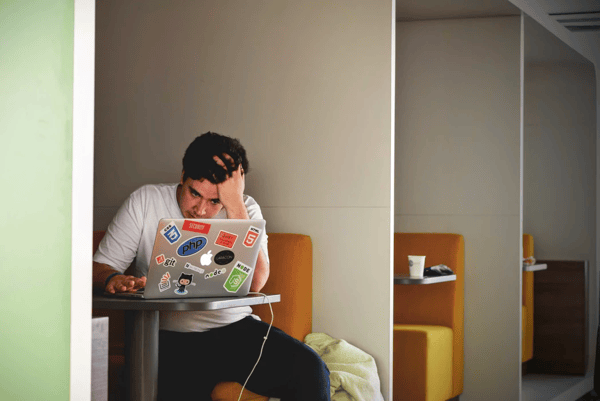For many students, college can be a time of extreme stress. Lack of sleep, heavy workloads, financial issues, and post-graduation pressure can contribute to the highly prevalent mental health problems within the student population. Telemedicine has proved to be a way to increase stress management, access to mental illness treatment, and overall well-being.
The Mental Health Crisis
The prevalence of mental illness is increasing worldwide. In America, 18% of people have some type of mental health condition, and this number seems to be on the rise. Among college students specifically, between 25 and 50% of students “meet the criteria” for at least one mental disorder in a given year. College is already a stressful environment where students are notoriously getting inadequate amounts of sleep, working hard to meet deadlines, and under an enormous amount of pressure; all of these factors can contribute to, worsen, or cause various types of mental health problems.
Even though colleges are increasingly providing resources for the management of mental health problems, only 1 in 5 students with mental disorders receives “minimally adequate treatment”. This leaves the rest of the students that are not receiving intervention in extremely vulnerable positions: in a situation of high stress without treatment for their mental illness.
Some reasons that college students are unable to seek mental health treatment is lack of time, lack of transportation, lack of money, and/or lack of motivation to get help. Telehealth provides a promising solution to all of these barriers to care. Internet and app-based interventions for stressed students has improved both the access to mental health treatment, and the stress levels of the participating students.
Telehealth and Stress Intervention

The study was conducted by WHO World Mental Health International College Student project, which aims to collect data on mental and behavioral problems in college students around the globe. In the study, the 150 participating college students were recruited through student counseling services, social media, and university press resources. The students were then randomly assigned to a mobile or internet-based stress intervention group.
Self-reported data was assessed at the baseline (prior to treatment), post-treatment (after 7 weeks), and a 3 month follow-up. Results showed that 106 students (76.8%) indicated that it was their first time receiving treatment for their mental illness/stress, and 77.3% of all students showed depressive symptoms at the baseline.
The intervention consisted of 8 online or app-based modules, each taking 30 to 90 minutes to complete. These modules were patient education tools on stress and stress management. Participants were advised to complete 1 or 2 modules weekly, making the intervention last 5 to 7 weeks.
Participants also had a personal diary app that asked questions such as “How do you feel today?” and “Were you able to identify any things contributing to your stress levels today?”; this helped them track daily mood fluctuations and identify the causes of their stress. Other features of the intervention include daily motivational messages, guidance from an eCoach (a trained Masters in Psychology candidate), and a feedback portion at the end.
The principal findings of the study were very positive; this telehealth intervention technique proved to be a success in the effort to reduce the participant’s stress levels. On average, perceived stress, emotional exhaustion, and symptoms of depression and anxiety decreased. Conversely, perceived self-esteem, academic productivity, and academic self-efficacy increased. Adherence and participation in all required parts of the intervention were high, which means this proved to be a feasible solution for busy college students.
The Future of Mental Health Care
With mental illness incidence, societal stress levels, and suicide rates at an all-time high, it is important for effective solutions to be implemented in order combat this growing problem. This study proves that telehealth technology has the power to do just that.
This intervention was able to improve access to care, cut expensive healthcare costs, and allow participants to get treatment on their own time. In a particularly stressful and vulnerable time in the lives of college students, interventions like this can drastically improve their college experience and overall quality of life. In the future, we hope to see college health centers utilizing telehealth technology to address the mental health of their student bodies. This strategy would be a big step toward solving the worldwide mental health crisis.
References:
http://www.mentalhealthamerica.net
https://www.cdc.gov/mentalhealth/data_publications/index.htm
https://www.nimh.nih.gov/health/statistics/index.shtml
Article:
https://asset.jmir.pub/assets/1739224cbbb104b08999f2fdabe48996.pdf